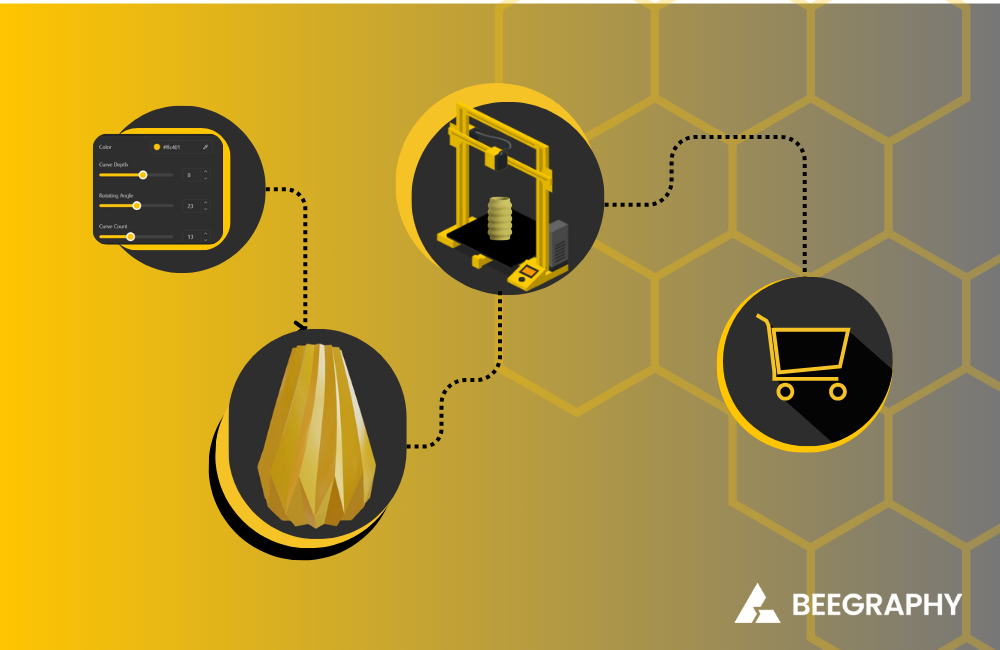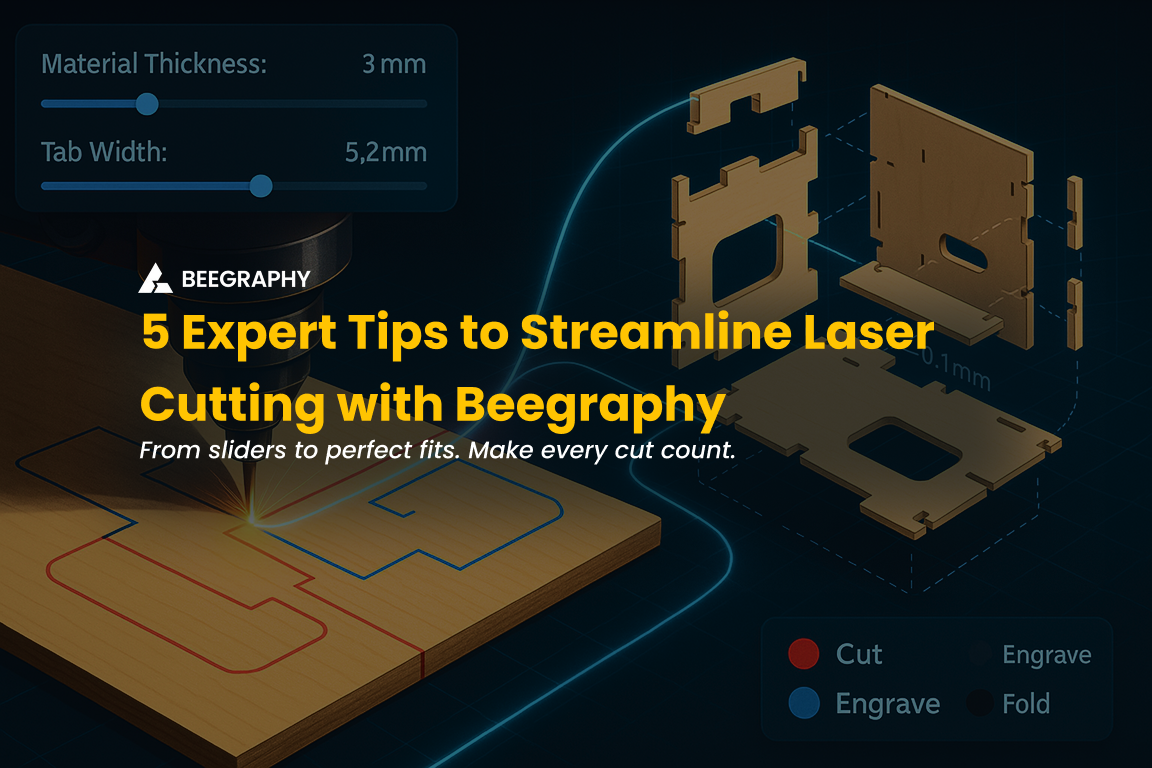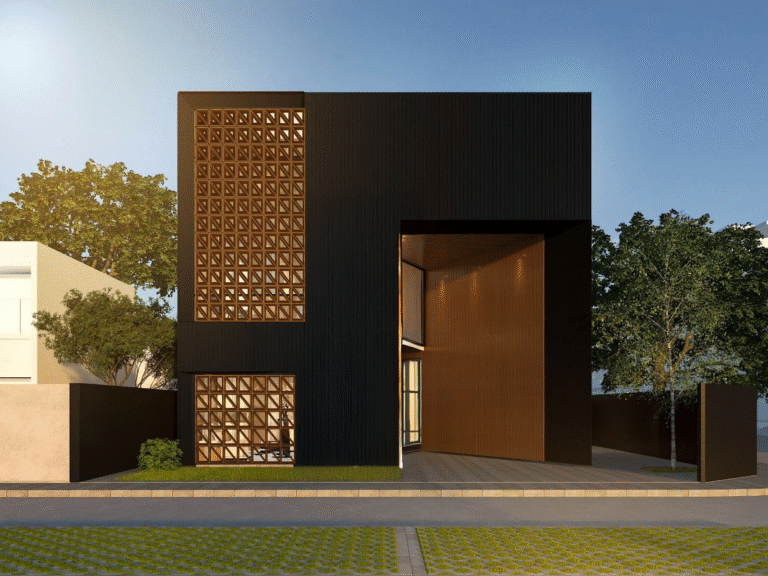Table of Contents
If you’ve ever tried letting your customers personalize a product online, such as tweaking a couch’s size, choosing materials, or adjusting design patterns, you know it’s not always easy.
The tools feel clunky, setup takes forever, and the outputs? They rarely match what your production team actually needs. Sound familiar? You’re not alone.
That’s why in 2025, 3D product configurators are taking center stage across industries like e-commerce, furniture, and industrial manufacturing.
But not all configurators are created equal. The best ones offer real-time 3D previews, work seamlessly with your store or ERP, and automatically generate files that your team can manufacture without extra effort.
💡 What is a 3D Product Configurator?
A 3D product configurator is a digital tool that lets customers interactively personalize products in real time, whether that’s choosing colors, materials, sizes, or functional features, and view the changes in a live 3D preview.
Think of it as the bridge between your product catalog and your customer’s imagination.
These configurators are often embedded on websites, connected to shopping carts, and integrated with backend systems like CRMs, ERPs, or manufacturing software.
The best ones also output production-ready files such as CAD drawings, BOMs (Bill of Materials), or CNC toolpaths.
🚀 Why Are Configurators Essential in 2025?
In a world where mass customization is the norm, configurators solve four major problems:
-
Customers demand personalization, and they want it fast, visual, and interactive
-
Sales teams struggle with accurate quoting, especially on complex orders
-
Manufacturers need to reduce errors and automate production data
-
E-commerce teams need immersive experiences that convert
A configurator bridges all of these gaps, from front-end delight to backend efficiency.
Top Product Configurators to Know in 2025
1. BeeGraphy
If your products aren’t just visual—they’re dimensional, functional, and need exact measurements, BeeGraphy gives you a serious edge.
What it is:
A browser-based parametric design and 3D product configurator built for creators, engineers, and manufacturers. Think CAD meets commerce in the cloud.
What it solves:
You can create interactive models where customers input dimensions, patterns, or other variables and BeeGraphy automatically adapts the geometry. It also generates CNC-ready files on the backend, cutting out the manual work.
How it works:
-
Browser-Based Parametric Editor: Build 2D/3D models with real-time input controls.
-
Live Preview & Pricing: Instantly visualize changes with updated cost.
-
Auto-Generated Manufacturing Files: Exports CAD/CAM files ready for CNC or laser.
-
No-Code Store Embedding: Add interactive configurators to websites without dev work.
-
Real-Time Collaboration: Share, co-edit, and deploy models directly in the cloud.
Use case:
A furniture brand allows customers to adjust table length, height, edge radius, and leg spacing and exports laser-ready cut files in minutes, no technician needed.
Pros:
-
True parametric control, not just visual swaps
-
Cloud-based and team-friendly
-
Production outputs are instant
-
Marketplace to sell models
Limitations:
-
Requires understanding of parametric logic
-
Smaller ecosystem compared to older tools
-
Still growing its plugin/API coverage
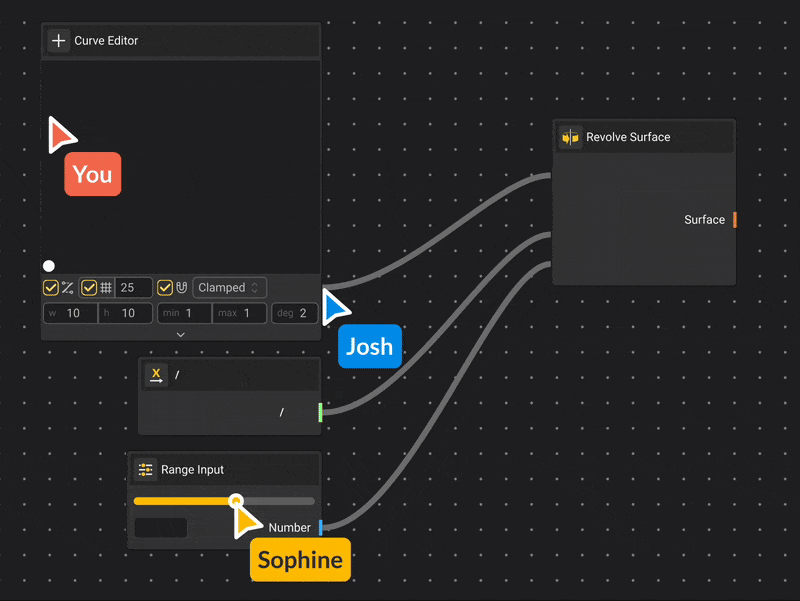
A look at Beegraphy’s Editor, and collaboration

Design processes on the cloud with Beegraphy
2. Threekit
If you want to wow users with showroom-quality visuals or let them place your product in their living room, Threekit is the gold standard.
What it is:
A visual commerce platform offering 3D product configuration, virtual photography, and AR experiences, all integrated with your e-commerce stack.
What it solves:
Static images no longer serves the purpose, customers want to explore products from every angle and understand how it looks in their real space.
How it works:
-
Photorealistic 3D Models: High-fidelity visuals with configurable options.
-
Augmented Reality (AR): View products in real environments via mobile.
-
E-Commerce Integration: Sync with platforms like Shopify, Salesforce, and BigCommerce.
-
Virtual Photography: Render thousands of product images without photoshoots.
Use case:
A luxury furniture retailer offers a couch with 20+ fabrics, 4 leg finishes, and 5 size options, all visible in real-time with AR room preview.
Pros:
-
Photorealistic 3D rendering
-
Powerful visual rules and dynamic pricing
-
Strong AR capability
-
Enterprise integrations
Limitations:
-
Higher cost of setup and operation
-
May require 3D expertise or agency help

3. Expivi
If you’re selling customizable goods with layered pricing rules (e.g. print + color + material), Expivi helps you simplify the complexity.
What it is:
A real-time 3D configurator platform with advanced pricing logic and multilingual support, designed for e-commerce scalability.
What it solves:
It balances beautiful visuals with powerful rules under the hood—so you can show complex variations while keeping your store fast and clean.
How it works:
-
Real-Time 3D Customization: Configure and view product changes instantly.
-
Pricing Rules Engine: Add conditional pricing for parts, options, or materials.
-
Multi-Platform Support: Works with Shopify, Magento, and other platforms.
-
Multi-Language & Currency: Built for global e-commerce use.
Use case:
A sports gear company lets users customize a bicycle: frame size, tire color, gear system, handlebar material—each affecting price and delivery time.
Pros:
-
Strong logic-based pricing
-
Great for scalable online stores
-
Supports multiple currencies and languages
-
Easy plug-in for e-commerce
Limitations:
-
Visual quality not as advanced as Threekit
-
Learning curve in rule-building for complex setups
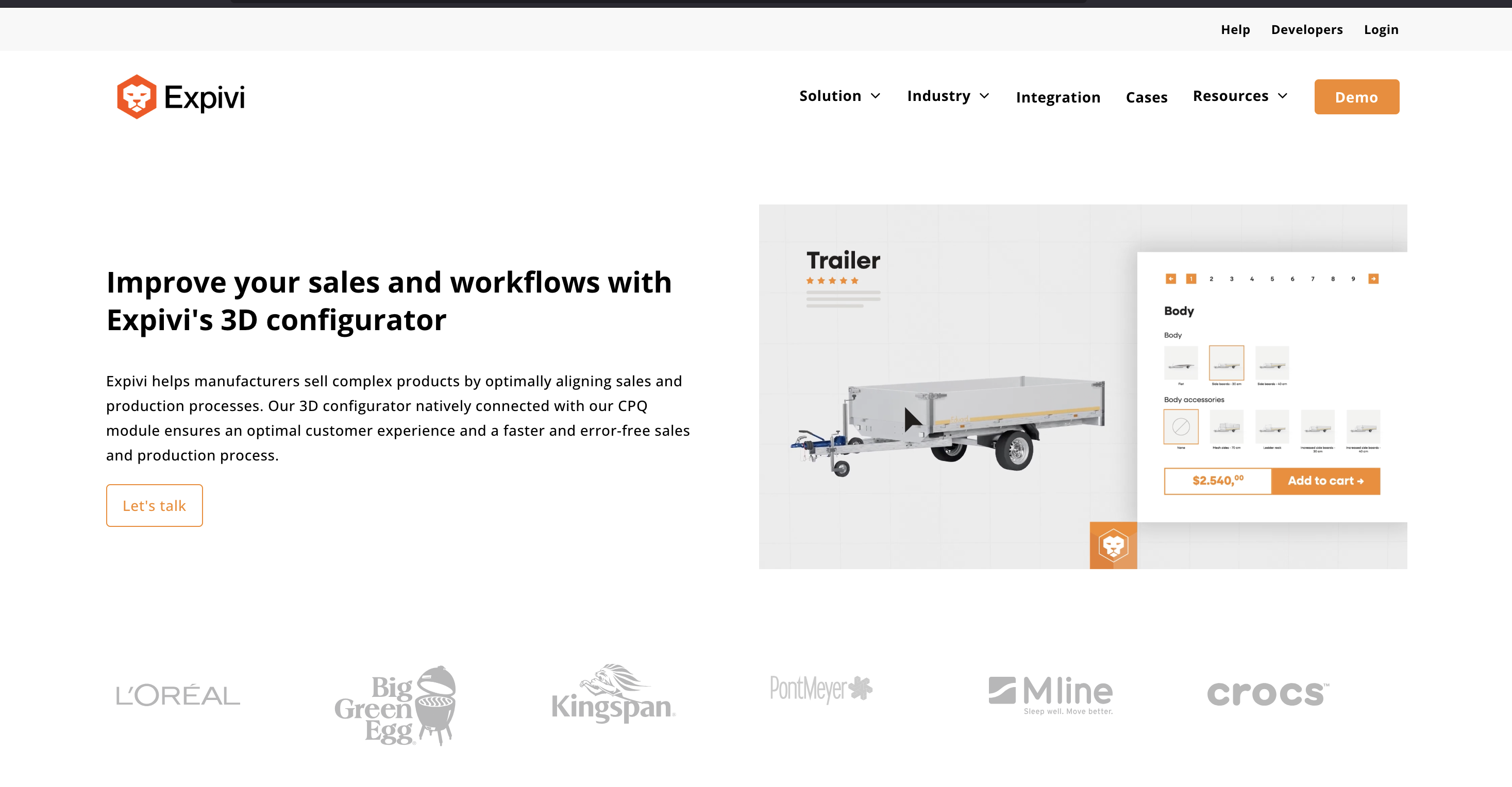
Expivi is a 3D product configurator.
4. Zakeke
If you need fast deployment and beautiful visuals but not full-blown parametrics, Zakeke delivers simplicity and style.
What it is:
A cloud-based 3D product configurator that supports visual customization and AR previews, with integrations for common e-commerce platforms.
What it solves:
It lets your customers see how different options look instantly , perfect for visually-driven purchases like shoes, bags, and home goods.
How it works:
-
3D & AR Previews: Rotate, zoom, and place products in real-world spaces.
-
Custom Design Inputs: Add images, text, or engravings on products.
-
Fast E-Commerce Integration: Plug into Shopify, WooCommerce, Wix, and more.
-
Cloud-Based Editor: Simple setup and fast deployment.
Use case:
A jewelry brand enables customers to engrave names on rings, preview metal finishes, and rotate the item in 3D or AR.
Pros:
-
Extremely user-friendly
-
Supports engraving and uploads
-
Quick to integrate with Shopify, Wix, WooCommerce
-
Affordable for small businesses
Limitations:
-
Not suited for technical customization (e.g., dimensions, angles)
-
Less control over backend outputs
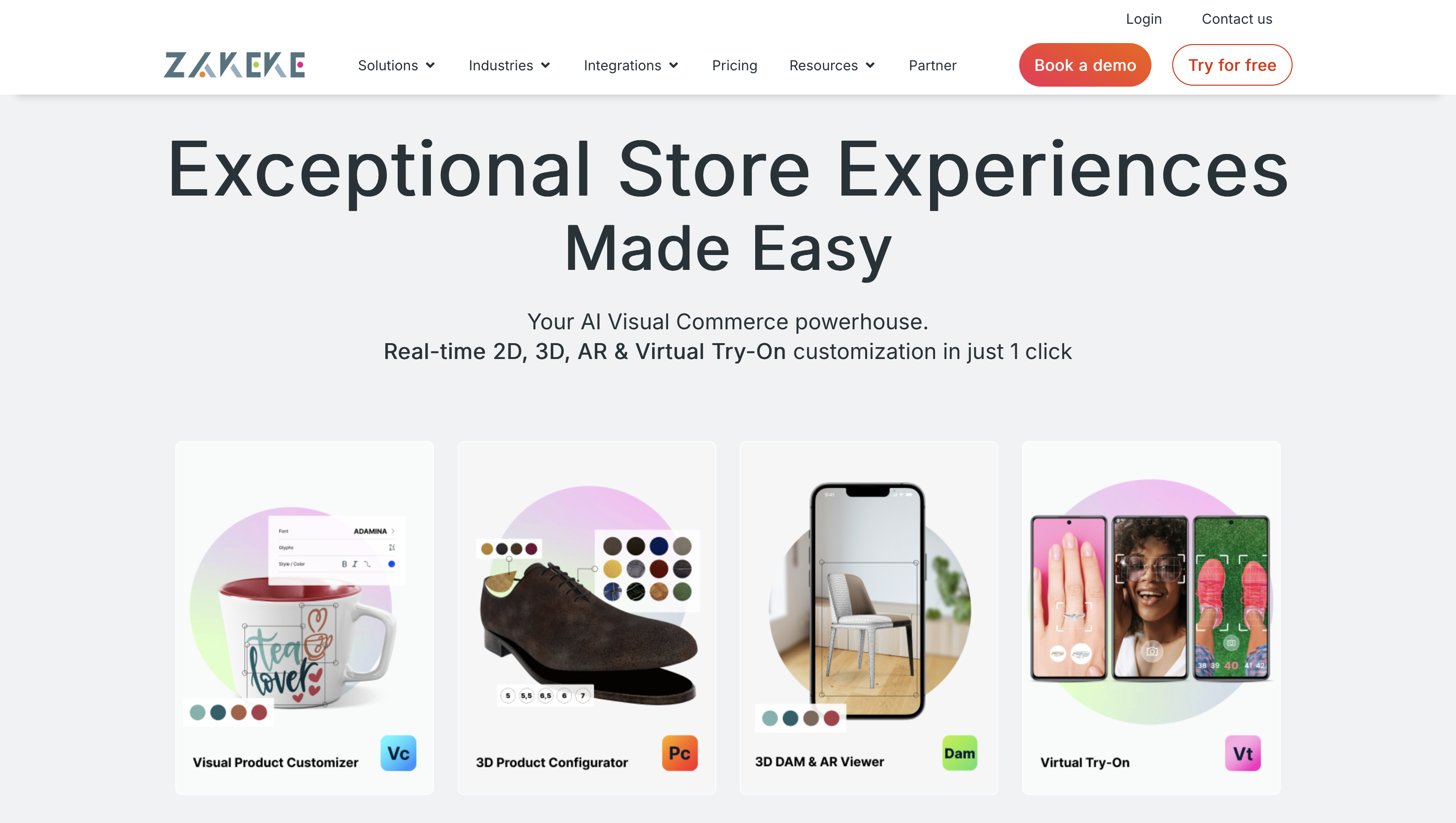
Zakeke is an omnichannel visual commerce platform known for easy integration with online stores
5. Kickflip
Kickflip is for the brand that wants control but doesn’t have developers on standby.
What it is:
A visual configurator builder that lets you create product customization experiences without writing any code.
What it solves:
Lets merchants launch customization without hiring a dev agency—while keeping full control over options, logic, and visuals.
How it works:
-
Visual Product Builder: Drag-and-drop configurator interface for merchants.
-
Responsive Live Preview: See every change update instantly on product visuals.
-
E-Commerce Friendly: Native Shopify and WooCommerce integration.
-
Custom Logic Controls: Manage variants, dependencies, and pricing logic visually.
-
Modern UI/UX: Optimized for both desktop and mobile customization flows.
Use case:
An apparel brand allows customers to customize t-shirts with their own text, logos, sleeve types, and color palettes, with pricing adjustments shown live.
Pros:
-
No code needed
-
Clean, mobile-first interface
-
Simple logic control and real-time updates
Limitations:
-
Geared toward simpler configurations (non-3D, non-parametric)
-
Limited integration with manufacturing tools

Kickflip is a code-free product configurator
6. Roomle
Roomle is purpose-built for the furniture and interior design industry, offering advanced 3D and AR product configuration with a focus on modular products and spatial accuracy.
What it is
A 3D and Augmented Reality configurator (known as the Rubens Configurator) that enables customers to visualize, assemble, and validate furniture or modular systems in real-time.
What it solves
Roomle eliminates configuration errors, enhances the buying experience with immersive visualization, and helps users configure complex modular products that fit perfectly into real spaces.
How it works
- 3D & AR Visualization: View and place products in real-world spaces using mobile devices.
- Full-Logic Configuration: Supports both simple options and complex rule-based setups.
- Error-Free Ordering: Prevents invalid combinations, ensuring only buildable products are ordered.
- E-Commerce & CPQ Integration: Connects to major platforms and ERP systems with cart-ready outputs.
- Room Planner Support: Configure products directly within full 3D room layouts.
Use case
A customer configures a modular wardrobe, selecting the size, internal compartments, and finish. Using AR, they place it in their bedroom to ensure it fits. The system validates all choices and sends a complete, error-free order to the retailer’s system.
Pros
- Best-in-class AR for furniture and modular products
- Prevents invalid configurations with full-logic rule enforcement
- Boosts customer engagement and conversion rates
- Scalable for both simple and advanced configuration needs
Limitations
- Most effective for furniture, cabinetry, or interior applications
- Custom pricing may not suit smaller retailers
- Requires high-quality 3D models and upfront setup effort
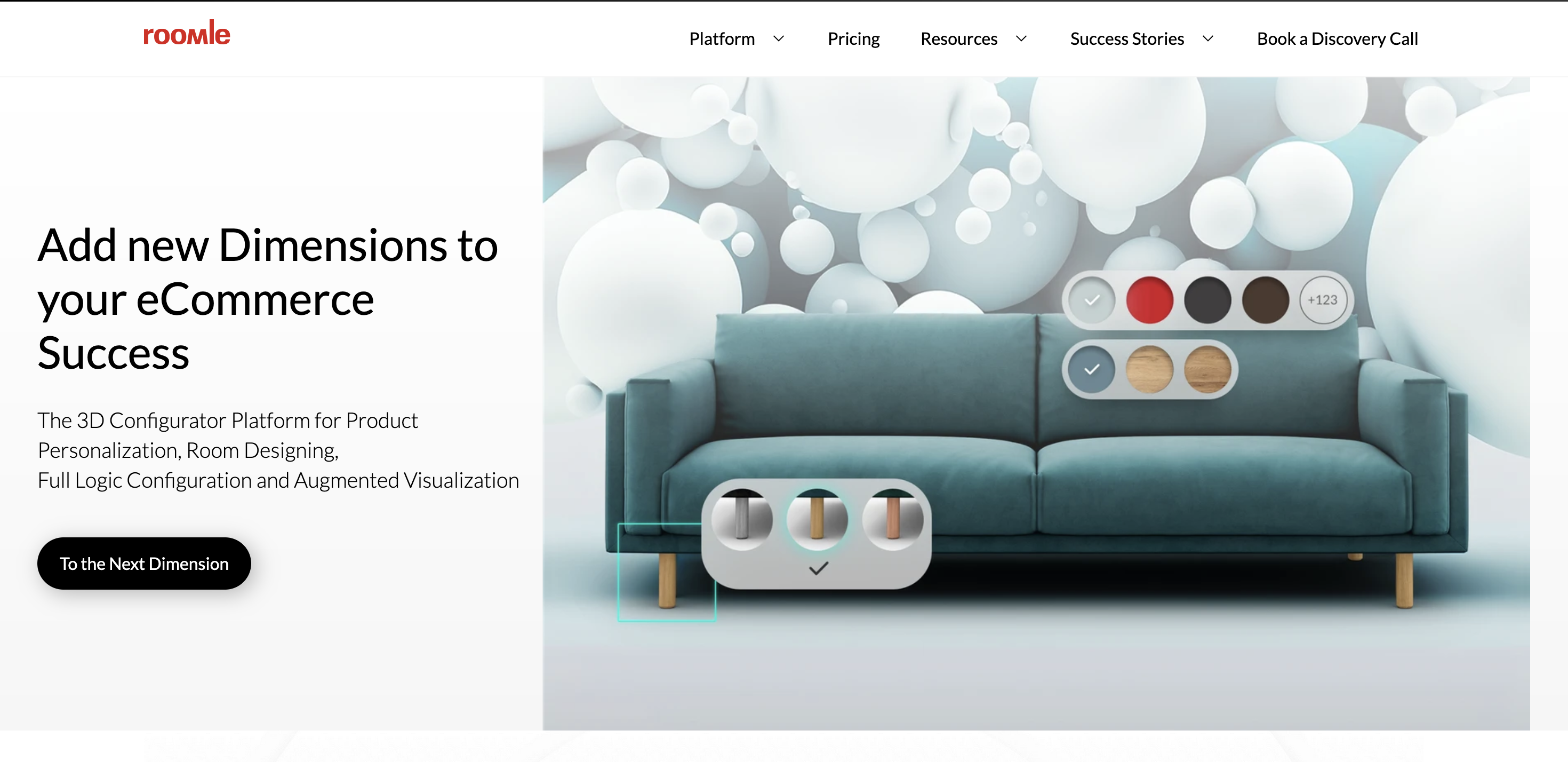
Roomle is a platform offering a 3D & AR product configurators
7. Tacton CPQ
When you’re selling configurable machines, modular enclosures, or industrial systems, Tacton gets it done.
What it is:
A configure-price-quote platform that supports complex engineering and sales logic tied to manufacturing.
What it solves:
Simplifies B2B sales of products with thousands of components and rules—while generating valid outputs like technical drawings and BOMs.
How it works:
-
Advanced Configuration Logic: Handle nested rules and dependencies.
-
CAD Automation: Generate drawings and models directly from configurations.
-
CRM & ERP Integration: Works with Salesforce, SAP, and others.
-
Instant Quoting: Auto-generate prices and proposals.
Use case:
A manufacturer of HVAC systems allows dealers to configure airflow capacity, materials, and electrical compatibility, and generates quotes and CAD files instantly.
Pros:
-
Handles deep configuration logic
-
Integrates with engineering and sales stacks
-
Scales for global industrial teams
Limitations:
-
Enterprise-level cost and complexity
-
Long implementation timelines

Tacton is a CPQ solution specifically for manufacturing and industrial product configuration
8. Epicor CPQ
If you already use Epicor ERP, this one’s made to snap in and support your sales-to-production flow.
What it is:
A CPQ system with 2D/3D visual configuration and direct integration into Epicor’s suite of tools.
What it solves:
Bridges the gap between sales and manufacturing by tying visual configuration to real product data and production processes.
How it works:
- ERP Integration: Seamless sync with Epicor’s product and sales data.
- Visual Configuration: Configure options in 2D/3D with guided logic.
- Automated BOM Generation: Create accurate, production-ready outputs.
- Sales to Production Workflow: From customer input to factory floor in one flow.
Use case:
A custom shelving manufacturer configures materials, shelf spacing, wall attachments, and finishes, and the system builds the BOM automatically.
Pros:
- Native ERP compatibility
- Great for repetitive or modular manufacturing
- Real-time quote accuracy
Limitations:
- Best for companies already using Epicor
- Requires setup assistance and training
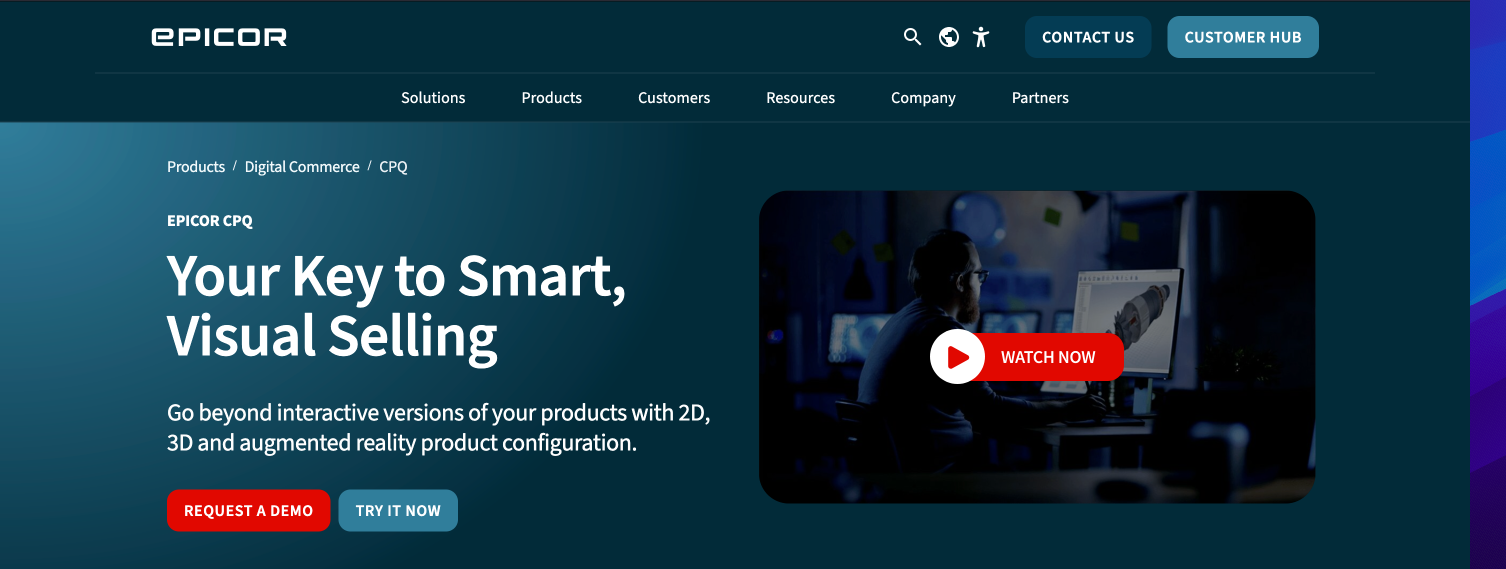
Epicor CPQ is a comprehensive Configure, Price, Quote (CPQ) solution
Emerging Trends in Product Configurators
The configurator space is evolving quickly, with several key trends influencing how businesses sell and how customers shop.
- 3D Visualization & Augmented Reality: High-quality 3D visuals and AR are now essential. Platforms like BeeGraphy, Expivi, and Roomle offer interactive previews that increase buying confidence and reduce returns. Customers can view products from all angles or place them in their space using AR, which leads to longer engagement and higher conversion rates.
- AI-Powered Personalization & Automation: AI is making configurators more intelligent. It helps recommend popular combinations, optimize pricing based on real-time data, and even automate rule creation in the backend. Threekit, for example, offers AI-guided product selection, helping users find the right fit faster and with less effort.
- Omnichannel Compatibility: Modern configurators must function across all platforms, including websites, mobile devices, in-store kiosks, and sales tools. Top solutions integrate with platforms like Shopify, Magento, WooCommerce, and Salesforce. BeeGraphy supports omnichannel CPQ, allowing both end-customers and sales reps to configure and quote products from any touchpoint.
- Real-Time Pricing & Quote Generation: Customers now expect instant pricing as they customize products. Configurators are tightly connected to ERP systems, pricing rules, and CPQ engines. BeeGraphy adjusts prices live as options change, while Tacton supports instant quotes for complex B2B configurations. This level of transparency improves trust and speeds up sales cycles.
Key Takeaways
- Configurators Build Engagement and Trust: 3D and AR configurators significantly boost customer engagement, time spent on site, and overall purchase confidence. When users can visualize and personalize products, they are more likely to buy and feel satisfied with their choices.
- No One-Size-Fits-All Solution: The right configurator depends on your product and business model. Tools like BeeGraphy or Zakeke work well for small e-commerce brands that want quick setup and visual customization. On the other hand, platforms like Tacton, Epicor CPQ, or Configure One are better suited for complex manufacturing with rule-heavy configurations and deep backend integration.
- Integration Is Essential: Modern configurators must connect seamlessly with e-commerce platforms, CRMs, CPQs, and ERPs. This integration ensures a smooth transition from customization to fulfillment. Tools like BeeGraphy, Tacton, and Epicor CPQ go a step further by generating manufacturing-ready files or BOMs, reducing manual work and errors.
- AI and Dynamic Pricing Enhance UX: AI-powered recommendations and live pricing add a layer of intelligence to the customer experience. These features guide users toward the right configuration, show cost updates in real time, and make the buying process feel more interactive and helpful.
- The ROI Is Real: Implementing a 3D or advanced CPQ configurator requires effort, but the return can be significant. Businesses often see shorter sales cycles, higher order values, fewer returns, and deeper insights into customer preferences. Allowing customers to co-create their products turns them into more informed and loyal buyers.
Product configurators are no longer a luxury, they are becoming a necessity in 2025. Whether your customer is designing shoes or customizing industrial equipment, they expect a visual, responsive, and personalized experience. The eight tools featured in this guide represent the leading edge of that transformation. Choosing the right one can be the key to unlocking faster growth and better customer satisfaction in the era of customization and Industry 4.0.


